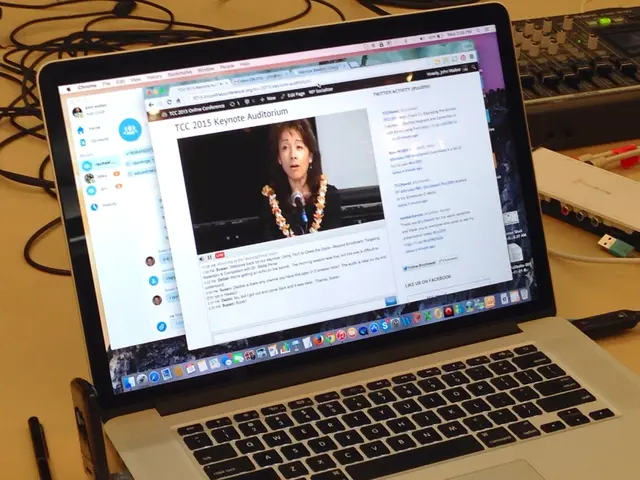Strategies for Utilizing Gamification in Education: 10 Pointers for Successful Implementation
Reinventing Education: The Power of Gamification
Let's spice up your teaching methodology with a dash of fun and competition - gamification! It's a modern strategy that transforms mundane learning into an exciting adventure. As traditional teaching struggles to keep up with the ever-evolving educational landscape, gamification has emerged as the perfect solution to boost student engagement.
Why Gamification Matters
In today's tech-driven world, students expect interactive and innovative learning experiences. Gamification caters to this shift, offering engaging activities that foster a love for learning. But it's not just fun and games. Gamification helps improve motivation, participation, and retention in students, leading to better academic success.
Dive into the 10 Keys to Master Gamification
To integrate gamification effectively, follow these 10 practical strategies and watch your classroom come alive.
1. Goal-oriented Gameplay. Don't mistake gamification for merely creating fun environments. Align learning objectives with game mechanics to meet your educational goals.
2. Choose the Right Elements. Understanding the various game elements is crucial to optimizing gamification for your classroom. Reward your students for completing tasks, foster competition with leaderboards, and immerse them in narratives and challenges.
3. Make it Interactive. Explore the possibilities of augmented reality (AR) and virtual reality (VR) to make learning immersive and interactive. From walking through ancient Rome to dissecting virtual frogs, these technologies revolutionize the learning experience.
4. Quest and Mission Adventures. Turn lessons into immersive story-based quests, tapping into fundamental psychological principles that drive motivation, engagement, and persistence.
5. Foster Teamwork. Collaboration promotes critical thinking, problem-solving, and social skills. Encourage team-based challenges to create a positive, inclusive learning environment.
6. Real-Time Feedback. Students crave instant gratification, so provide immediate feedback throughout their learning journey. Use digital gamification tools to track student progress and offer personalized recognition.
7. Meaningful Rewards. Reinforce intrinsic motivation by providing rewards that matter, such as class privileges or digital badges. Avoid over-relying on extrinsic rewards to maintain long-term engagement.
8. Real-World Applications. When possible, connect the gamified activities to real-life scenarios to make learning more relevant and applicable.
9. Localized Engagement. Incorporate localized educational apps to cater to regional preferences, aligning with the curriculum and learning goals of your specific classroom.
10. Gamify Assessments. Ditch traditional exams and opt for gamified assessments to reduce anxiety, increase engagement, and make evaluations more enjoyable.
Remember, gamification isn't about replacing traditional teaching but enhancing it. By integrating game mechanics, you can create engaging, effective, and student-centered learning experiences. Embrace gamification, and revolutionize the classroom experience!
Explore Proven Reality's Education Solutions for Innovative Gamified Learning Experiences
Looking for cutting-edge gamification solutions for your classroom? Proven Reality offers a wide range of AR, VR, and mixed reality tools to elevate the learning process. Contact us today to discover how gamification can transform the way you teach!
Sources
- Ko, S., & Yoon, K. W. (2013). A systematic review of gamification and its potential for education. APQ, 39(2), 152-183.
- Wu, J., Cho, B., & Chou, Y. (2018). Gamification in education: Literature review of the effectiveness of gamification on learning performances. In Proceedings of the 5th International Conference on Computer Science and Education for Social Change (ICCSESC 2018), 1-8.
- Kapp, K. M. (2012). Gamification: Engaging learners in authentic learning environments. AECT, 55(1), 26-39.
- Biswas, D., Dharmaraj, R., & Bargotiya, R. (2020). Gamification in education: A systematic review. Journal of Applied Learning and Instructional Design, 10(3), 1-14.
- Han, S., & Han, J. (2015). Gamification in education: Investigating survey data. Computers & Education, 101, 52-63.
- The strategic use of technology, such as software and virtual reality, can provide immersive and interactive simulation-based training for education-and-self-development, enhancing the learning experience.
- Beyond entertainment, gamification in education supports education and self-development by boosting motivation, participation, and retention, leading to an overall improvement in student lifestyle and academic success.
- To ensure diverse educational needs are met, localized support is essential, with gamified education solutions adopting region-specific apps that align with the curriculum and learning goals.
- For isolated learners or those seeking flexibility, online events hosted by education platforms can offer a community experience, promoting collaboration, teamwork, and event-based learning opportunities.
- Continuous development and refinement are crucial in the field of technology-driven marketing strategies, including gamification, to ensure it remains relevant and effective in the ever-changing education landscape.








